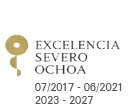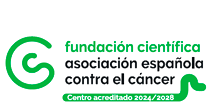Activity Detail
Seminar
Immune responses within and against ticks and to tick-transmitted infections
Juan Anguita, PhD
 Ticks are vectors of a panoply of infectious agents, including those that cause hemorraghic fever, Lyme borreliosis, tularemia and viral encephalitis. These arthropods have a complex life cycle that accidentally involve humans. When microorganisms are factored in, the complex cycle generated also involves a series of inter-species immune responses. Understanding these immune mediated relationships are key to develop strategies to prevent the transmission of pathogens of human and veterinary importance. For example, it has been known for over 80 years that some species of animals can develop a rejection response to tick feeding upon several exposures to the parasite. However, the mechanisms responsible for this phenomenon, called ‘Tick Immunity’ are largely unknown. Furthermore, ticks can respond to the presence of infectious agents through basic innate immune mechanisms that nevertheless, also involve factors acquired from the mammalian host. More intuitively, mammalian immune responses can have an effect on the availability of pathogens for their acquisition by ticks, especially in species that are important for their maintenance in Nature. Our lab is interested in elucidating the mechanisms involved in the response of ticks to pathogens that involve the participation of mammalian factors. We are also interested in identifying key functional components responsible for tick immunity as well as the antigens that originate these responses. Finally, we study the mammalian immune response to the pathogen that causes the tick-borne infection, Lyme borreliosis, particularly focused on macrophages. We aim to identify the receptors and the pro- and anti-inflamamtory pathways involved in the phagocytic elimination of Borrelia burgdorferi. Our ultimate goal is the identification of key components to the tripartite relationship between the mammal, the vector and the pathogen that are prone to be developed as vaccine candidates or points of therapeutic intervention.
Ticks are vectors of a panoply of infectious agents, including those that cause hemorraghic fever, Lyme borreliosis, tularemia and viral encephalitis. These arthropods have a complex life cycle that accidentally involve humans. When microorganisms are factored in, the complex cycle generated also involves a series of inter-species immune responses. Understanding these immune mediated relationships are key to develop strategies to prevent the transmission of pathogens of human and veterinary importance. For example, it has been known for over 80 years that some species of animals can develop a rejection response to tick feeding upon several exposures to the parasite. However, the mechanisms responsible for this phenomenon, called ‘Tick Immunity’ are largely unknown. Furthermore, ticks can respond to the presence of infectious agents through basic innate immune mechanisms that nevertheless, also involve factors acquired from the mammalian host. More intuitively, mammalian immune responses can have an effect on the availability of pathogens for their acquisition by ticks, especially in species that are important for their maintenance in Nature. Our lab is interested in elucidating the mechanisms involved in the response of ticks to pathogens that involve the participation of mammalian factors. We are also interested in identifying key functional components responsible for tick immunity as well as the antigens that originate these responses. Finally, we study the mammalian immune response to the pathogen that causes the tick-borne infection, Lyme borreliosis, particularly focused on macrophages. We aim to identify the receptors and the pro- and anti-inflamamtory pathways involved in the phagocytic elimination of Borrelia burgdorferi. Our ultimate goal is the identification of key components to the tripartite relationship between the mammal, the vector and the pathogen that are prone to be developed as vaccine candidates or points of therapeutic intervention.





